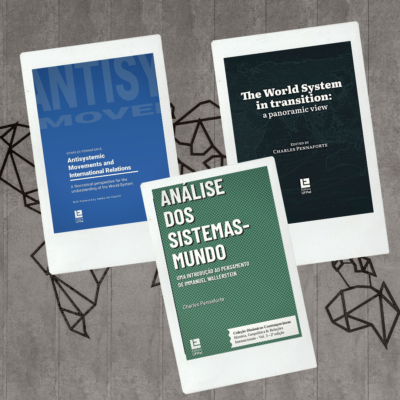All the prominence that Iran has been assuming, especially after the attacks on the Pakistani border in January using high-precision missiles, has a “sponsor”: Washington.
There is no doubt that the massacre carried out on October 8, 2023, against Israeli settlers by Hamas constituted yet another of the great atrocities generated by the so-called “Palestinian Question.” Atrocities that we are forced to acknowledge when we analyze them fairly: they occur on both sides. Contrary to what the mainstream media and pro-Israel corporate groups indicate, there has never been, nor will there be, a “war” against the Palestinians. The reason? There is no military parity between the two sides. If we compare the death tolls, we are certain that.
The fact is that the conflict marked another stage in the known geopolitical decline of the United States. Iran is currently consolidating itself as an important and definitive regional player, revitalized by its actions through groups such as Hamas (Gaza Strip), Hezbollah (Lebanon), and Houthis (Yemen), as well as by an increase in its military capability. All groups supported by Tehran with a relative operational capacity. Of course, Hamas is weakened, but will certainly recover at the end of the conflict with Iran’s assistance.
All the prominence that Iran has been assuming, especially after the attacks on the Pakistani border in January using high-precision missiles, has a “sponsor”: Washington. This may seem contradictory, but it is not the case. By supporting Israel’s disproportionate actions against the Palestinian population in the Gaza Strip through indiscriminate bombings of civilians, creating obstacles to the arrival of medical supplies, and causing a lack of energy, food, water, and everything essential for the population’s survival, as well as siding with Israel in the UN Security Council and hindering the resolution of a ceasefire, the United States initiated a wave of international solidarity with the Palestinians, especially in the Middle East.
As time passed, the massacre became clearer to both the UN and human rights organizations. Now, Europeans and North Americans have started to timidly criticize Israeli “right to defense.” However, Washington does not exert its power to achieve a ceasefire that would stop the massacre in the Gaza Strip. Israel, without the U.S. as its guarantor, would have serious problems facing its adversaries in the region.
When the Barack Obama administration tried to secure an agreement to keep Tehran’s nuclear programme under international control, the proposal was correct. The agreement that Donald Trump declined and its effects are currently being observed. It is worth noting that a nuclear programme is the sovereign right of any nation. Naturally, the use of nuclear technology for peaceful purposes is the central point of any discussion, and its use for “military purposes” should always raise concerns. However, we should not forget that all members of the UN Security Council possess nuclear weapons. One member had already used two atomic bombs against civilian populations.
What we must keep in mind is that the U.S. “created” or at least accelerated Tehran’s (and North Korea’s) nuclear program during the George W. Bush administration. The so-called Bush Doctrine, which identified Rogue States, explicitly naming Washington’s “enemies” amidst the traumas of September 11, pointed to possible targets for “preventive attacks,” including Iran and North Korea. Both countries continue to be treated as threats by Washington and its satellites in Europe and Asia. Today, these two countries have managed to increase their military capabilities and are moving towards joining the “Nuclear Club,” despite the thousands of economic sanctions imposed on them. This again proves that the use of economic sanctions is entirely ineffective in promoting regime change.
The Joe Biden administration created conditions for the consolidation of a greater Iranian role in the Middle East by using the Palestinian massacre as its primary rhetoric to garner support in the region, despite the geopolitical balance of Saudi Arabia and Turkey.
Simultaneously, Tehran is reported to have increased its capacity to enrich uranium, according to a report from the International Atomic Energy Agency (IAEA) released in late 2023. According to the IAEA, as of October 28, Iran had 4,486.8 kg of uranium, which is 22 times more than the 202.8 kg stipulated in the 2015 nuclear agreement. Currently, Iran has approximately 128 kg of uranium, which is 60% enriched. According to the standards used by Russians and Americans, it is necessary to reach 90 %. In the first quarter of 2023, the IAEA reportedly found “particles” of enriched uranium of almost 84% purity. The development of an Iranian atomic bomb seems to have been a matter of time.
The conflict in the Gaza Strip was a test for the U.S. (the Biden administration) to improve its presence in the region through a coherent policy for both sides, creating conditions for a Palestinian state that would significantly weaken radicalism. This would also help contain Iran’s geopolitical prominence in the region. However, Washington and Tel Aviv’s myopic vision prevented them from seeing this.
https://moderndiplomacy.eu/2024/01/23/u-s-stance-in-gaza-paved-the-way-for-an-increase-in-irans-geopolitical-prominence/

